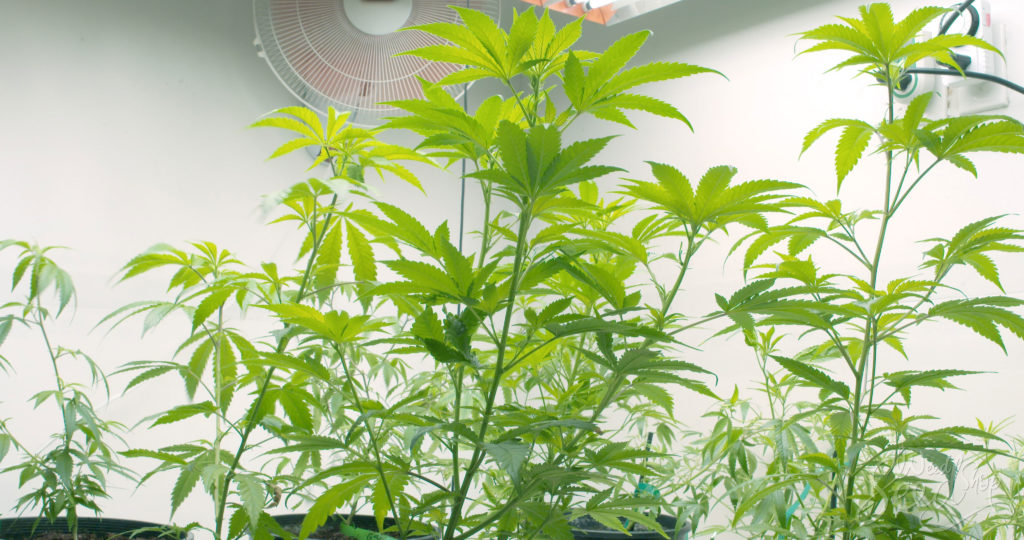A ventilation system is necessary in any indoor grow room. Not only does it maintain the humidity and temperature of the space, but it also encourages your plants to be healthier and grow better! To learn how to keep your indoor grow room well ventilated, keep reading this article!
If you are growing indoors, it’s essential to think about how you are going to ventilate the grow space. In the natural environment, plants are exposed to the delicious breeze of mother nature. If you want to create a successful grow room, you must provide some air circulation for your plants.
Good ventilation is invaluable for cannabis plants. It can make them grow faster, while at the same time protecting them from moisture-loving pests. Plus, if you want to keep the smell of your grow room under control, ventilation is entirely necessary.
This guide will teach you how to set up proper ventilation to optimize your grow space.
Why is ventilation important?
If you want a grow room that doesn’t attract pests with its humidity and doesn’t overheat, then ventilation is something that must be considered. If you are new to growing weed, this information is especially important. Grow room problems are often caused by over-heating and excessive humidity, and these are easily avoidable with the right fans and exhausts.
The potential of good air circulation in your grow room:
- It prevents mold and pests: Mold thrives in humid conditions and certain pests thrive in moldy conditions! Air circulation keeps the humidity under control and prevents mold-devouring pests.
- It maintains temperature and humidity: It is extremely hard to manage the temperature and humidity without proper ventilation. While a fan might keep the temperature under control, without an exhaust, there is no real humidity control.
- Encourage stronger stems: Proper ventilation encourages your plants to be stronger and more robust.
- Grow faster and bigger yields: Good air circulation replenishes the amount of CO2 in the air, which aids the photosynthesis process. This gives you plants that grow faster and potentially give bigger yields!
A single fan is not enough

A news flash for newbie growers: one or two fans in your grow space does not really constitute proper ventilation! It might be enough if you are growing one or two plants. But for a grow room that has multiple plants in it, there needs to be more than just a fan. More specifically, there needs to be an exhaust system.
Cannabis plants release moisture while they are growing. Just think about it. You feed your cannabis plants by watering them. That moisture travels all the way up the stems and into the leaves. It is finally released from the leaves as water vapor into the air. That humidity, along with the heat that is given off by your lighting, starts to build up.
A fan might temporarily ease the problem by spinning some air around. But at some point, the hot air that is building up in your grow room needs to be exhausted and replaced by new, fresher air. And trust me, your plants will thank you for it.
How to place your fans
When you are setting up your fans, you want to make sure that there is no place in the grow room with stagnant or unmoving air. Arrange the fans so that every part is reached. Having said that, try not to have fans pointing directly at plants. Too much wind can give them wind burn and result in clawed leaves.
Your fans should be placed so that wind is blowing through the “canopy” or above the plants, as well as over the growing medium. Once you think your fans are in the right place, walk around your grow room and try to find any spots that might not be receiving air flow. Most smaller scale grow rooms will have at least two fans.
Choosing an exhaust fan
The important part of your ventilation system is the exhaust fan. This is the element that’s going to suck all the hot air out of your grow room. Choosing which exhaust fan to use will depend on the amount of space you’re trying to ventilate.
Exhaust fans come with a “CFM” rating. It stands for “cubic feet per minute”, and corresponds to the amount of air it can pump out (in cubic feet) per minute. The diameter of exhaust fans usually ranges from 10 to 20 cm (4 to 8 inches). Most grow rooms operate with an exhaust fan with a diameter of 20 cm (8 inches).
To calculate which CFM rating will be appropriate for your grow room, you need to know the space in cubic meters. To calculate this, simply multiply the length x width x height of your grow room. This is the amount of air you need to pump out per minute.
To account for any inefficiency in the exhaust fan, multiply the cubic meters of space in your grow room by two. That’s the rough CFM rating you’re looking for from your exhaust fan. Look for the exhaust fan closest in CFM to what you calculated.
How to place the exhaust fan
As a rule of basic physics, the hot air that needs pumping out will be living at the top of your grow room. The introduction of new air should be happening towards the bottom of your grow room. Now, by that logic, your exhaust fan should be somewhere near to the top of you grow space.
Another tip for maintaining a bit of inconspicuousness with your grow room is to attach the exhaust fan to the inside. Some growers will put exhaust fans on top of grow tents, but this can be extremely loud. There are attachments on exhaust fans that allow you to hang it from the roof of the grow space. The minimizes sound and attracts less attention to your grow operation!
The option of a carbon filter

While an exhaust fan is necessary for ventilation, it doesn’t necessarily deal with the smell of your grow room. If your exhaust fan is pumping hot, smelly air out your window, walkers by might get a waft of caannabis every now and then. To prevent surprising your neighbours like this, you can install a carbon scrubber.
A carbon scrubber will absorb just about every smell in the air. The trick is to place it in the grow space so that the air travels through the carbon filter before it reaches the exhaust fan. The best way to ensure this is really to use ducting. It might not be aesthetically appealing, but it’s effective.
Don’t compromise on good ventilation
This is definitely not an area of your grow room that you want to compromise by being cheap or lazy. The kinds of problems associated with poor ventilation are not easily fixed – such as excess humidity and mould growing on your buds! Setting up ventilation doesn’t have to be expensive or take a long time. It’s all about the commitment to a good grow!








